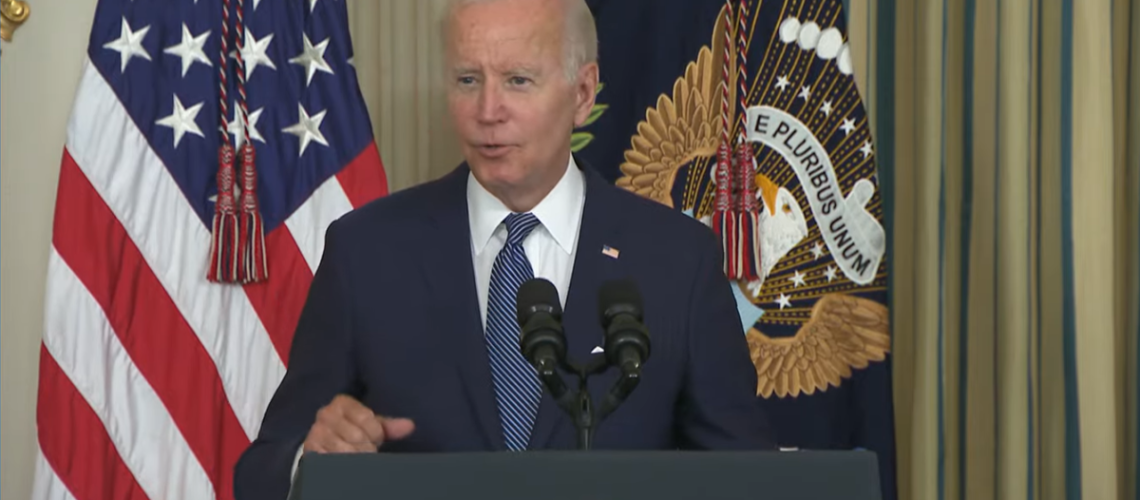More than $60 billion in private investments in clean energy have been announced since the landmark Inflation Reduction Act was passed in August. The Act includes $370 billion in climate and energy spending.
In his State of the Union address, President Joe Biden celebrated U.S. progress towards a decarbonized energy future. Now that the Inflation Reduction Act (IRA), containing $369 billion in climate and energy spending, is being implemented, the focus now turns to deployment and growth as solar energy takes center stage in the energy transition.
Since the IRA was passed, over 100,000 energy transition jobs have been created, many of which are manufacturing jobs in solar and battery energy storage. Already over $60 billion in private investments have been announced since the law went into effect in August.
“Over the next several years, these and future investments will lead to nearly one million American jobs and strengthen our domestic supply chain while reducing our dependence on foreign energy,” said Jason Grumet, chief executive officer of American Clean Power Association.
Unemployment in the United States is now the lowest in over 50 years, marking a triumphant rebound from the job losses caused by the COVID-19 pandemic. It currently stands at only 3.4%. Since Biden took office, over 800,000 U.S. manufacturing jobs have been created.
“Where is it written that America can’t lead the world in manufacturing again? For too many decades, we imported products and exported jobs,” said President Biden. “Now, thanks to all we’ve done, we’re exporting American products and creating American jobs. Inflation has been a global problem because of the pandemic that disrupted supply chains and Putin’s war that disrupted energy and food supplies. But we’re better positioned than any country on Earth. We have more to do, but here at home, inflation is coming down.”
Annual U.S. energy expenditures are expected to fall by at least 4% by 2030 under the act, a savings of nearly $50 billion dollars per year for households, businesses and industry.
“By 2032, there will be five times the amount of solar that’s installed today, which is enough electricity to power every home east of the Mississippi River. People in every zip code will be breathing cleaner air and working in stable, family-supporting clean energy careers,” said Abigail Ross Hopper, chief executive of the Solar Energy Industries Association (SEIA).
President Biden went on to celebrate the plan to install 500,000 electric vehicle charging stations across the country by tens of thousands of International Brotherhood of Electrical Workers. He pointed to the fact that Americans can save more than $1,000 a year with tax credits for the purchase of electric vehicles and energy-efficient appliances. Over 20,000 infrastructure projects have been announced under his presidency, making updates to airports, bridges, transmission lines, and more.
“The renewable growth empowered by the IRA will only occur if we enhance and expand the nation’s electrical transmission network, which is inefficient, balkanized and antiquated in much of the country. We need a 21st century grid that is better able to withstand increasingly frequent severe weather events and can efficiently move power from America’s richest renewable resource areas to the population centers with the greatest electricity demand,” said Gregory Wetstone, president and chief executive officer of the American Council on Renewable Energy (ACORE).
A report by Princeton University said the Inflation Reduction Act could cut annual emissions in 2030 by an additional 1 billion metric tons. This would represent closing two-thirds of the remaining emissions gap between current policy and the nation’s 2030 target of lowering emissions 50% below 2005 levels.
“It really makes me incredibly optimistic,” said Princeton’s Jesse Jenkins. “It doesn’t get us all the way there on its own, but it keeps us in the climate fight.”
Under the IRA, solar deployment may accelerate from 2020 rates of 10 GW of capacity added per year to nearly five times as much by 2024, adding 49 GW of utility-scale solar each year. Solar deployment may be well over 100 GW per year by 2030, the Princeton noted.
Investment in solar could reach $321 billion in 2030, nearly double the figure of $177 billion expected under the previous policy landscape. The Act may lead to nearly $3.5 trillion in cumulative capital investment in new American energy supply through the next decade, said the Princeton study.



